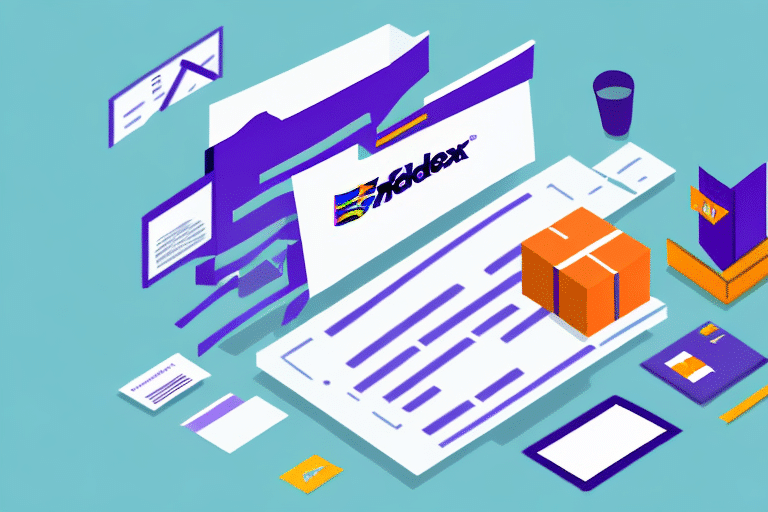Importance of a Streamlined Shipping Process
A streamlined shipping process is essential for businesses of all sizes and sectors. Without optimization, companies may face inefficiencies, increased costs, delays, and errors, leading to dissatisfied customers, missed opportunities, and lost revenue.
Key benefits of a streamlined shipping process include:
- Reducing shipping costs
- Minimizing errors and delays
- Improving customer satisfaction
- Boosting productivity by freeing up employee time
Moreover, an optimized shipping process helps businesses stay competitive by offering faster and more reliable delivery times compared to competitors. Effective shipping management also allows for better inventory control, helping prevent stockouts and overstocking, which can be costly.
Benefits of FedEx Ship Manager and QuickBooks Integration
Integrating FedEx Ship Manager with QuickBooks offers a range of benefits that enhance shipping efficiency:
- Seamless Data Transfer: Automatic transfer of shipping data between platforms eliminates the need for double data entry.
- Increased Accuracy: Reduces the likelihood of errors in shipping information, ensuring packages are delivered correctly.
- Time Savings: Automates routine tasks, allowing employees to focus on more strategic activities.
- Cost Efficiency: Access to discounted shipping rates and avoidance of costly errors and delays.
Additionally, combining these tools streamlines the order fulfillment process, leading to faster delivery times and enhanced customer satisfaction.
Integrating FedEx Ship Manager with QuickBooks: A Step-by-Step Guide
Integrating FedEx Ship Manager with QuickBooks involves a straightforward process:
- Download and Install FedEx Ship Manager: Obtain the software from the FedEx website and follow the installation instructions.
- Set Up QuickBooks: Install QuickBooks from the QuickBooks website and configure your products and services.
- Connect the Platforms: In FedEx Ship Manager settings, enable the integration and enter your QuickBooks credentials.
- Enter Shipping Details: Input recipient information, package weight, and shipping method into QuickBooks, which will sync with FedEx Ship Manager.
- Generate Shipping Labels: Create and print shipping labels directly from QuickBooks, and record tracking numbers for real-time monitoring.
- Track Shipments: Use the FedEx Ship Manager dashboard to monitor shipment status and set up automatic tracking updates in QuickBooks.
For detailed instructions, refer to the QuickBooks Integration Guide.
Saving Time and Money with Automated Shipping Processes
Automating your shipping process with FedEx Ship Manager and QuickBooks can lead to significant time and cost savings:
- Eliminates Manual Data Entry: Reduces the time spent on administrative tasks and minimizes human error.
- Enhances Shipping Accuracy: Ensures that packages are correctly labeled and delivered to the right addresses.
- Boosts Efficiency: Speeds up order fulfillment, allowing businesses to handle a higher volume of orders without increasing workforce.
- Real-Time Tracking: Provides visibility into shipment statuses, enabling proactive management of any issues.
According to a Statista report, efficient shipping processes are crucial as e-commerce sales continue to grow, emphasizing the need for automation to handle increased order volumes effectively.
Overcoming Shipping Challenges with Technology
Businesses often encounter several challenges in their shipping processes, including:
- Manual data entry errors
- Delays in shipping
- Poor shipment visibility
- Inaccurate tracking information
- Inefficient resource utilization
Leveraging technology solutions like FedEx Ship Manager and QuickBooks can help overcome these challenges by:
- Automating Data Entry: Reduces errors and speeds up the shipping process.
- Enhancing Visibility: Provides real-time tracking and updates on shipment statuses.
- Improving Resource Management: Optimizes the use of inventory and shipping resources.
Implementing these technologies ensures a more reliable and efficient shipping operation, ultimately leading to better customer experiences.
Best Practices and Tips for Shipping Efficiency
To maximize shipping efficiency using FedEx Ship Manager and QuickBooks, consider the following best practices:
- Automate Shipping Processes: Utilize the automation features to save time and reduce errors.
- Maintain Accurate Data: Ensure all shipping information is current and correct to prevent delivery issues.
- Leverage Rate Calculators: Use FedEx's rate calculator to find the most cost-effective shipping options.
- Implement Barcode Scanning: Enhance accuracy in order fulfillment and inventory management.
- Regularly Review Processes: Continuously assess and improve your shipping workflows for optimal performance.
- Train Your Team: Ensure that employees are proficient in using both FedEx Ship Manager and QuickBooks to maximize their effectiveness.
Future Trends in Shipping Processes
The shipping industry is evolving with several emerging trends and innovations that businesses should watch:
- Artificial Intelligence and Machine Learning: Optimize shipping routes and reduce operational costs.
- Drone Delivery Services: Enhance delivery speeds and expand delivery capabilities.
- Blockchain Technology: Improve shipment tracking and security through decentralized ledgers.
- Mobile Integration: Increase the use of mobile devices for managing shipping tasks on the go.
Staying informed about these trends allows businesses to adopt new technologies that can further streamline their shipping processes and maintain a competitive edge.
Conclusion
Integrating FedEx Ship Manager with QuickBooks offers significant advantages in streamlining your shipping process. Automation leads to time and cost savings, enhanced accuracy, and improved customer satisfaction. By following the outlined steps and best practices, businesses can establish an efficient shipping workflow that drives long-term success and competitiveness in the market.






















